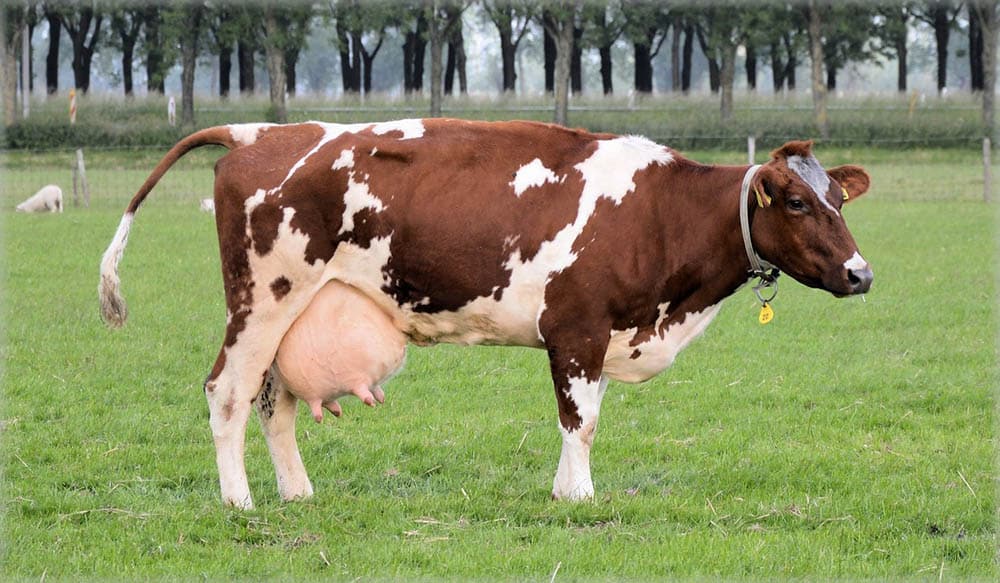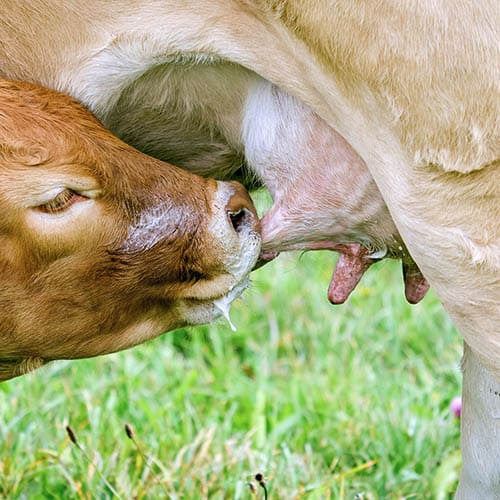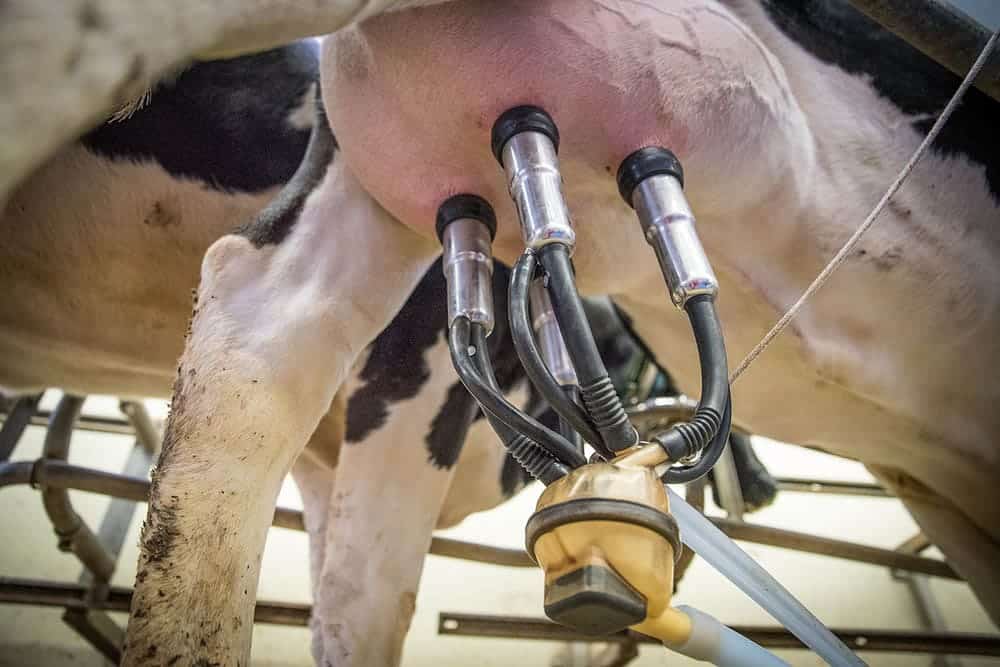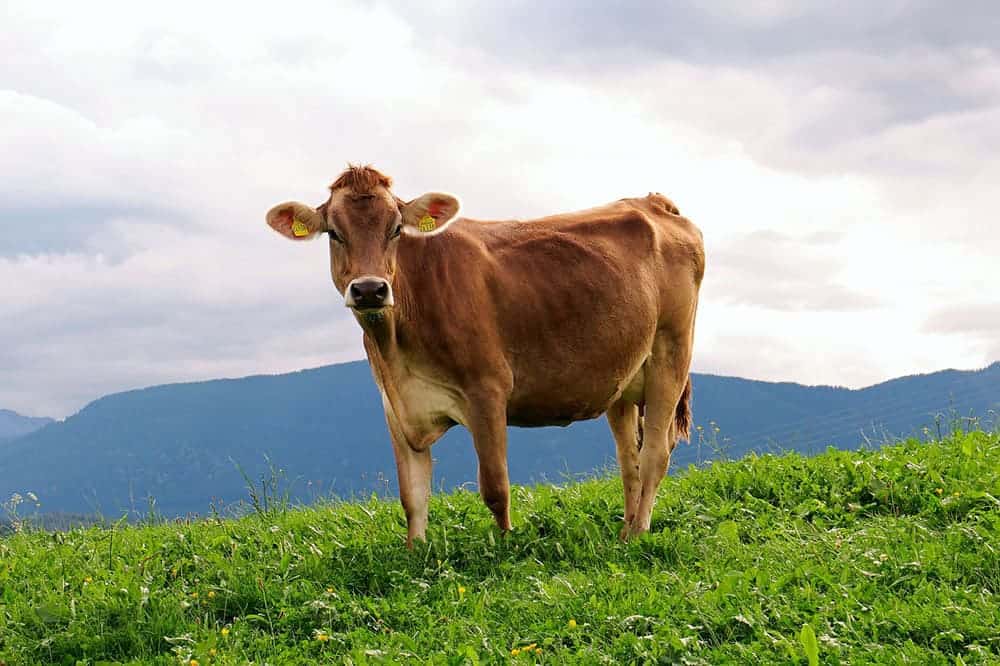Dairy products like milk, cheese, and yogurt are considered vegetarian foods because they don’t require a cow to be slaughtered for consumption. Dairy production isn’t without its impact, however. Industrial dairy operations require cows to be pregnant continually and often separate calves from mothers within hours of birth.
Do cows need to be pregnant to produce milk? Yes, they need to be pregnant or recently have birthed a calf. Cows cannot produce milk if they’re not pregnant.

Do Cows Only Produce Milk After Pregnancy?
Like other mammals, cows need to be pregnant and give birth for milk production. The milk is intended to nurse the calf and complex hormones are involved in milk production.
Typically, hormones like progesterone and estrogen are produced in the second and third trimesters of pregnancy, stimulating milk production. Oxytocin is also necessary for the secretion of milk, as well as prolactin, which is stimulated when a calf nurses.
Cows are usually finished producing milk about 2 months before the next calving to allow the udders to rest. A cow’s gestation period is just over 9 months, and cows can calve every year.
Dairy cows undergo selective breeding to produce high volumes of milk, which is more than a calf would need. The volume depends on numerous factors, including genetics, breed, and age. Cows are milked every day to continue milk production after calving.

What Types of Dairy Cows Are There?
Dairy cows are nothing new. All cows can produce milk for calves, but only a few breeds are suitable for human milk production. Most U.S. dairy farms have the following breeds:
- Jersey
- Holstein
- Guernsey
- Ayrshire
- Brown Swiss
- Milking Shorthorn
- Red and White Holstein
Holsteins represent roughly 90 percent of the U.S. dairy population.
How Do Dairy Farms Keep Constant Milk Production?
To maintain consistent milk production, dairy cows are continuously impregnated. Cows are ready for breeding around 25 months old. Cows are either impregnated by artificial insemination or by a bull. Once they give birth, they lactate for 10 months before being impregnated again.
Cows are bred on this cycle until around 5 years old when their bodies are no longer useful. These cows are slaughtered and sold as low-quality beef or for animal byproducts.
The natural lifespan of cows is around 15 or 20 years. Because of the breeding and calving cycle, dairy cows are slaughtered between 4-6 years old instead of retiring.

What Happens to the Dairy Calf?
Cows must give birth to calves to produce milk. Female calves are used for future dairy production or sold as veal, while males are either shot or sold as veal.
Males that aren’t killed are castrated. A young male’s horns are removed using a disbudding process, which burns them away with caustic acid or cuts them with special tools. It is a controversial practice in several countries.
Dairy Production Statistics
- There are approximately 250 million cows producing milk globally.
- North America has 10 million dairy cows.
- The European Union has 23 million dairy cows.
- Australia and New Zealand have 6 million dairy cows.
- Asia has over 12 million dairy cows.
- The average Holstein produces 23,000 pounds of milk during a lactation period.
- India has more dairy cattle than any other country with 60 million cows.
- The European Union produced more cow milk than any other country in 2019 at 155 million metric tons.


Conclusion
Intensive dairy production has increased the demand for milk-producing cows, leading to issues of welfare. Cows must be continually impregnated to produce milk and continuously milked long after the calf is taken away. Once the cow has served her purpose, she is sent to slaughter.
Featured Image Credit: Pixabay
